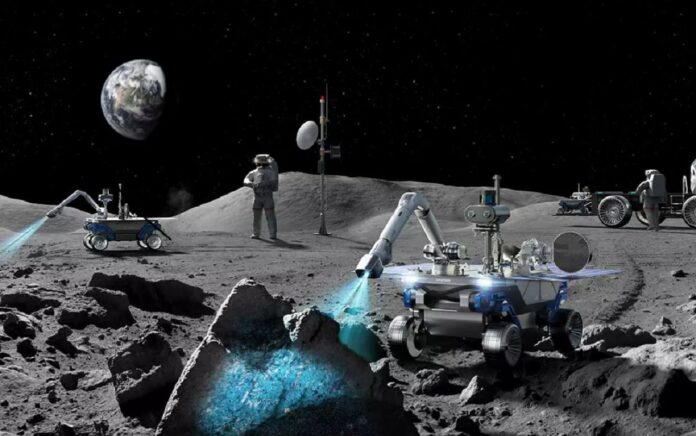Hyundai Motor has announced its plans to build a lunar exploration rover development model in collaboration with major Korean research institutes in the aerospace sector. The autonomous driving unit is specially designed to explore the Moon’s surface, equipped with various advanced technologies with the goal of delivering a universally applicable mobility platform to handle a variety of payloads.
Back in 2022, the Hyundai Motor Group signed a joint multilateral agreement with six Korean research institutes in the aerospace sector to run and support a consultative body to develop a solar-powered mobility solution for lunar surface exploration.
Among the six Korean research institutions involved in the project are the Korea Astronomy and Space Science Institute (KASI), Electronics and Telecommunication Research Institute (ETRI), Korea Institute of Civil Engineering and Building Technology (KICT), Korea Aerospace Research Institute (KARI), Korea Atomic Energy Research Institute (KAERI) and Korea Automotive Technology Institute (KATECH).
The Group looks to combine its robotics and autonomous technologies with the body of aerospace knowledge to first create a mobility development model for moon exploration.
The rover will utilize Hyundai Motor Company and Kia Corporation’s advanced robotics and autonomous driving technologies, including cameras and LiDAR enabling autonomous capabilities, solar panels and batteries for charging, and electric motors for its drive system. In addition, Hyundai Rotem’s robot manufacturing technology will be utilized to develop a multi-purpose mobility platform for moon exploration and beyond.
The Group’s component will occupy the lower section of the rover, while the upper section will consist of scientific payloads for lunar surface exploration. The rover will have a thermal management function and radiation shielding to withstand the extreme environment of the lunar surface.
Once the lower part of the rover is developed, the consultative body expects it to function as a mobility platform. This will support an upper part that will hold a variety of advanced technologies for digging, excavation, and human exploration of the lunar surface for resources. The solar-powered, autonomous driving mobility unit will weigh around 70 kg.
“Hyundai Motor Group has consistently stated its goal is to contribute to expanding the human reach and the scope of human mobility experiences,” said Yong Wha Kim, Executive Vice President and Head of the R&D Planning & Coordination Center of Hyundai Motor and Kia. “The creation of the lunar exploration mobility development model not only reflects this goal but also shows our ambition to achieve tangible results in the face of significant challenges. With the rover’s development, we are moving beyond land, sea, and air mobility to expand into space mobility.”
Before the rover can be sent to the Moon, the Group will conduct mission-based performance testing of the development model in an environment that closely mimics the lunar surface in preparation for the lunar mission and makes refinements based on the test results.
Following the development, testing, and refinement, the plan is to land the rover near the south pole area of the Moon to carry out various scientific missions. The Group expects to complete the initial test unit as soon as the second half of 2024 and aims to create a model that has launch capability in 2027.
